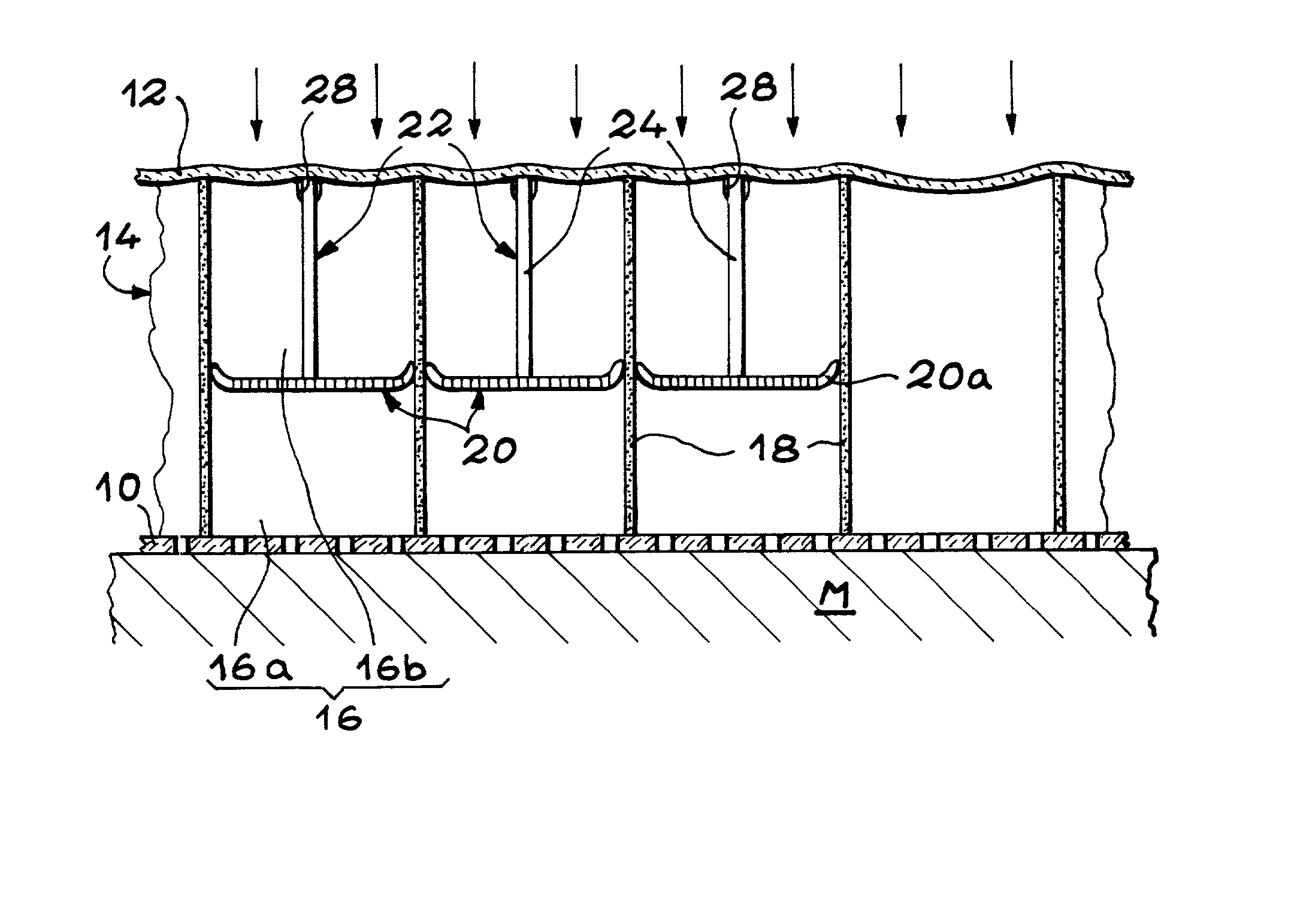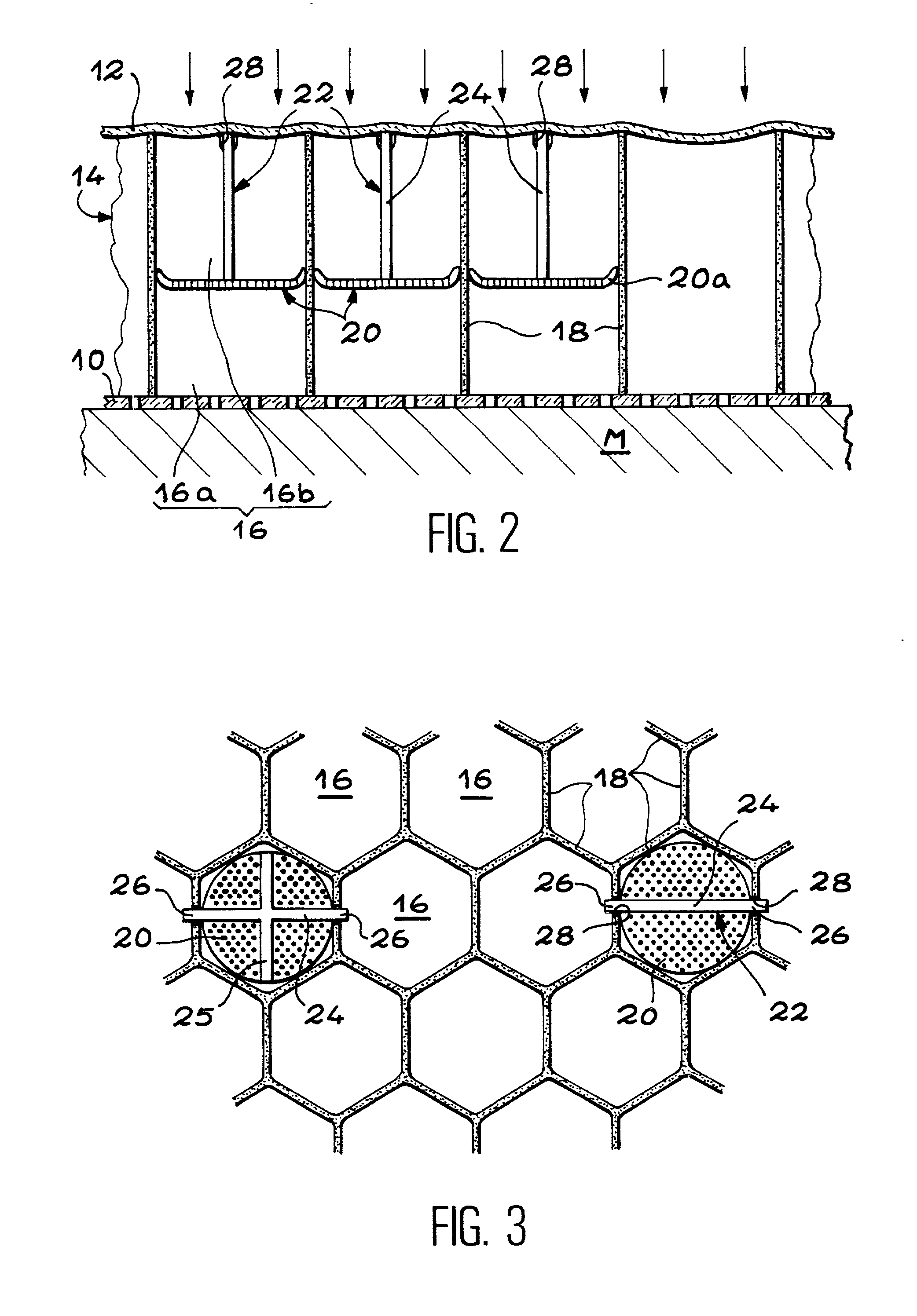Noise reduction sandwich panel, notably for aircraft turbojet engine
a technology of aircraft turbojet engines and sandwich panels, applied in the direction of efficient propulsion technologies, machines/engines, instruments, etc., can solve the problems of complex production of linear one-degree of freedom sandwich panels, limited frequency range damped by such structures, and low erosion resistance, etc., to achieve the effect of easy and quick production
- Summary
- Abstract
- Description
- Claims
- Application Information
AI Technical Summary
Benefits of technology
Problems solved by technology
Method used
Image
Examples
first embodiment
[0032] According to the invention, each positioning unit then supports only one separative component.
[0033] Each positioning unit may then comprise a small plate, placed between the separative component which it supports and the reflector or the resistive layer, substantially perpendicularly to the latter, said small plate comprising two protruding portions, adjacent to the reflector or to the resistive layer, which are supported in the notches formed in the edges adjacent to the reflector and to the resistive layer of both opposite partitions of the corresponding cells.
[0034] Alternatively, each positioning unit may also comprise at least two tabs which extend between the separative component which they support and the reflector or the resistive layer, each tab comprising an end folded between the waffle core and the reflector or the resistive layer.
[0035] In this case, advantageously, at least one of the tabs completely crosses a cell adjacent to the one which contains the separat...
second embodiment
[0036] According to the invention, each positioning unit supports several separative components, inserted in aligned cells along a given direction, and integrates, between each pair of consecutive separative components which it supports, at least one tab able to deform along said direction. With this layout, the separative components may be placed easily and quickly, in spite of the possible variations in the pitch of the aligned cells resulting from manufacturing tolerances and from the optional non-planarity of the panel.
[0037] In this embodiment, the separative components supported by a same position unit, are advantageously placed in every other cell, in the direction of the alignment of the cells.
[0038] In this case, each positioning unit may comprise small plates, each of which is placed between the reflector and the resistive layer and one of the separative components supported by this positioning unit, perpendicularly to the reflector or to the resistive layer. A tab then jo...
PUM
 Login to View More
Login to View More Abstract
Description
Claims
Application Information
 Login to View More
Login to View More - R&D
- Intellectual Property
- Life Sciences
- Materials
- Tech Scout
- Unparalleled Data Quality
- Higher Quality Content
- 60% Fewer Hallucinations
Browse by: Latest US Patents, China's latest patents, Technical Efficacy Thesaurus, Application Domain, Technology Topic, Popular Technical Reports.
© 2025 PatSnap. All rights reserved.Legal|Privacy policy|Modern Slavery Act Transparency Statement|Sitemap|About US| Contact US: help@patsnap.com



